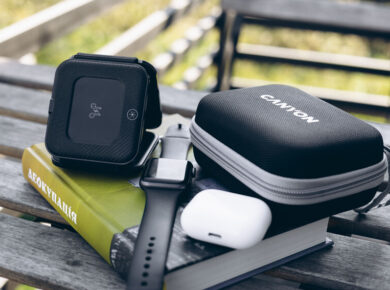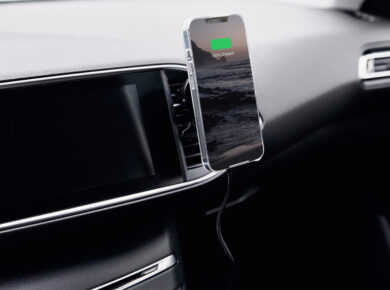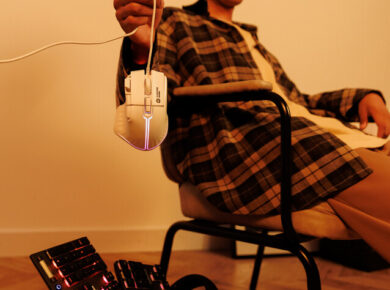In the multifaceted reality of numerous devices, distinguishing the difference between type c and micro usb, USB-C, might seem peculiar.
In this guide, we’ll take a short trip through the history of USB, its evolution, forerunners, and distinctive characteristics. See what is type C, and highlight the parameters, profits, and drawbacks of USB-C. Furthermore, we’ll dissect the divergences between USB-C, USB-B, and USB-A.
The origin and progression of USB and micro-USB
Launching out, the Universal Serial Bus, or USB, was intended to facilitate the bulkiness of multitude of plugins. Gradually, it has undergone transformations and upgrades to meet the demands of modern appliances.
The journey began in the mid-1990s when a pool of enterprises, including Intel, Compaq, and Microsoft, came jointly to devise a standardized connection interface with the core goal – to simplify and streamline the multitude of different connectors back then. The term “universal” reflects this ambition so as to craft a universally accepted standard.
Later, mini-USB was crafted in the early 2000s to be a solution to the size preceding constraints of the standard-A USB. Primarily engineered for cameras and early smartphones, USB connecting interface stood up as a true game-changer for its time, leveraging connectivity for increasingly more popular portable devices.
Tech predecessors of USB charger
Before the USB advent, connecting devices often meant dealing with a number of proprietary adapting gears, where each device manufacturer had its unique wire and interface, resulting in a constant confusion. Given that, USB aimed to supply a unified, standardized linkage across manifold devices.
Introduce the micro USB
Altogether, with power methods rushing forward, and powerhouse accessories turning tinier, the demand for thinner adapting devices intensified. So, in the mid-2000s, micro USB stepped in, with its reduced size, standing as a perfect fit for an array of devices, from smartphones to Bluetooth headsets.
Over time, type C vs micro USB appeared, evolving into a multifaceted appliance, rendering its primarily modest capacities into smartphones and smaller devices’ assistant.
Inside the USB reality
So, a regular USB interface handles voltage, amperage, and wattage. These three reliable terms decide how fast your device charges. Here, a standard USB 2.0 charger gives about 5V at 0.5A, making 2.5W of power. Perfect for phones, but as other gadgets get more energy-consuming, we need more.

USB distinctions and tech demands
Striking into the essence, let’s clear up: USB connectors can be broadly categorized into three main types – USB-A, USB-B, and USB-C, each of them catering to its specific function, with own set of characteristics.
- USB-A: standard connector, known as a standard USB, is the most well-proved. So, usb c vs usb a difference is: the latter is rectangular in shape and was initially engineered for hosting gadgets (PCs & laptops).
- USB-B: The Printer Connector is square on, being initially conceived for connecting peripheral like printing and scanning devices to PCs. They are less common on modern gadgets but can still be discovered on certain specialized equipment.
- USB-C: The Universal connector stays for the latest and most all-round USB connector, being reversible, compendious, and streamlined appliance to be plugged either manner. Looking deeper, usb c vs usb b diversity is the first one applied for a widest line-up of all kinds of gadgets and accessories.
Ever-evolving dream of all types
Fast forward to the USB-C inception, in early 2010s, it luckily appeared, promising versatility, rapidity, and the finalization of ever-annoying “where’s end?” trick.
It quickly turned into an amazing discovery and relief, granting out valuable laptops, computers, and cameras altogether one USB-C port, capable of charging, data transfer, and connecting to multiple peripherals.
USB-C: Jack of all trades
Coming closer, we all know the struggle of keeping our devices charged and ready to go.
Speaking openly, USB-C absolutely disrupted the connectors’ scene, self-presenting as all-in-one connector, replacing various adapters like micro USB, mini USB, and even the larger standard-A USB.
That’s where USB and USB-C connectors step in, with the ability to replace multiple connectors by just one plugin, so let’s take a tour through their technical bits and grasp the impact on our daily life.

How to utilize USB-C, and what are the distinctive attributes?
USB-C has become the irreplaceable powering interface for our portable assistants due to its multifaceted nature plus superspeed charging, enhanced power range, and versatility. Its tech specifications include support for higher voltages and amperages.
Just compare: the standard USB 2.0 charger typically gives up around 5V at 0.5A, delivering 2.5W of power. With it, USB-C easily handles powering gears demanding from 5V/3A (15W) to 20V/5A (100W) or more.
Here are USB-C distinctive tricks:
- Reversible design, letting users to plug in the accessoire without bothering about its orientation. This feature adds advantage and decreases chances of harming the connector.
- Supporting high data transfer speeds transfer, forging it ideal for assignments like files transferring and clips streaming. Added by USB 3.1 & USB 3.2 specs further enhance data transfer rates.
- Power delivery, enabling USB-C to produce higher degree for charge, granting negotiable energy up to 100W. It brings a potent single USB-C item to energize diverse gears, from energy-efficient wearables to power-hungry laptops. This feature is particularly valuable for charging laptops and other power-efficient devices.
- Compact size: USB-C is smaller than its forerunners, developing into all-adaptable gear for slim tools (ultrabooks and smartphones).
- Versatility: USB-C is an all-purpose connector that can be used for various purposes, including data transfer, charging, and connecting external displays. The charger intelligently adjusts the current flow based on the connected device’s capabilities, ensuring safe and efficient charging.
- Data transfer and alternate modes. You can efficiently observe, USB-C is a highly multifaceted adaptor backing up high-pace data translocation and alternate modes like DisplayPort and Thunderbolt. It turns the item into a remarkable charging remedy for diverse connectivity needs.
Gains of USB-C adapting interface
Jumping far beyond its precursors, tech bonuses of USB-C include:
- Speed-up energizing: USB-C’s ability to produce higher power effect in less time, a boon for our time-crunched lives.
- Universal adaptability. The versatility of USB-C results into compatible with an extensive range of devices, promoting a unified charging ecosystem.
- Single cable solution. USB-C’s support for data transfer and alternate modes means a single cable can serve multiple purposes, simplifying cable management.
- Future-proofing. USB-C’s adaptability to increasing benchmarks ensures it remains relevant in the face of advancing technology.

Drawbacks of USB-C
- Compatibility issues: some older devices and peripherals still use USB-A or USB-B connectors, so, with this in mind, adapters or dongles may be required for compatibility.
- Potential for confusion. The variety of USB connectors can lead to confusion, especially for users who are not familiar with the diversity between USB-A, USB-B, and USB-C.
Pay attention to somehow diverging, but also beneficial power appliances. Paving the line to the topic, we can’t pass by two crucial players in the powerhouses market, Thunderbolt and DisplayPort interface. These two connection giants are amazing helpers in plugging the devices, yet, they have their distinctive features.
Thunderbolt excels in the high-performance, professional landscape, yielding to USB-C as to versatile, universal connector for everyday consumers. Going further, DisplayPort, entered the scene in 2006, carefully carrying both video and audio signals, steps back by being less multifunctional than USB-C type.
Improvements over time
Since its introduction, USB technology has undergone significant improvements. The evolution from USB 1.0 to USB 2.0, USB 3.0, USB 3.1, and the latest USB 3.2 has brought advancements in data transfer speeds, energy distribution, and general productivity. These upgrades ensure that USB technology persists to fulfill the growing demands of modern appliances.
So, USB-C has the crown of champion in power items, linking the gaps between power, data, and multimedia.
Final curtain: a unified future
As we say goodbye to the time of micro and mini USB connectors, USB-C stands tall. USB-C is totally able to replace multiple sockets, simplifying our lives, reducing cable clutter, and enhancing compatibility. Its versatility, speed, and user-friendly design make it a linking gear of choice in the modern world.
As we navigate the world of USB tips, it’s essential to stay alert about the latest technological progressions. With that in mind, CANYON, being a greatly geared tech product platform, offers a broadest range of highest-standard prime discoveries for your PC and mobile.
Topped with trendy design, we present CANYON coming into play as your fairy tech consultant. The company’s all exquisite sorts of power appliances, from lightnings and sync cables to ultra-durable USB type-C to USB A connectors, fast-charging, full-featured, or braided ones.
Therefore, we’ve thoroughly demonstrated that USB-C type cables bring together efficiency, versatility, and safety, with CANYON making every plug-in a step into a future of superspeed and smart power delivery.







